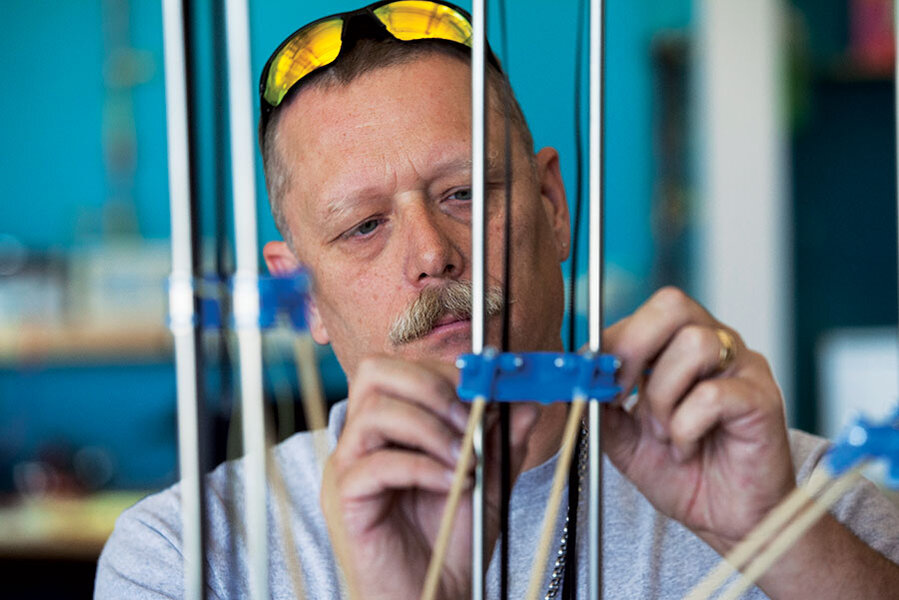'Maker movement' inspires new artistic expression
Loading...
Museums, libraries, and universities have long been the places where people gather to exchange ideas and build new ones. Now as a modern “maker movement” gains momentum (see the July 7 & 14 cover story), traditional institutions are also creating new programs and spaces to allow for greater cross-pollination between art and technology.
“The maker movement and digital media and coding are revitalizing the arts,” says Christopher Amos, director of educational media and technology at Carnegie Hall. Digital music, videos, GIFs, and memes are just some of the new ways that art is being created and shared, he says.
Here are some other emerging hybrids:
•The New Museum in New York has created New Inc, the first museum-led incubator that’s somewhere between a corporate environment, a tech lab, and a cluttered art studio.
•Johns Hopkins University in Baltimore, Md., is working toward opening an incubator for technology and the arts led by Thomas Dolby, a digital musician known for his 1980s pop song “She Blinded Me With Science.”
•In Madison, Wis., a group of library studies graduate students have launched The Library as Incubator Project, an online project that highlights libraries and artists working together.
In cities where space is limited and expensive to rent, programs such as Mozilla’s Hive Learning Network are filling the gaps with pop-up events. The Hive is a consortium of organizations in New York, Chicago, Pittsburgh, and Toronto that provide programs for youth to play with technology and digital media to make something whimsical. This spring the Hive NYC cohosted a high school Maker Prom where students could create anything from digital music scores to LED corsages.
“We want people to think of themselves as creators,” says Chris Lawrence, senior director of Hive Learning Network. “There’s an opportunity to advance that kind of thinking when art and the maker movement intersect.”








